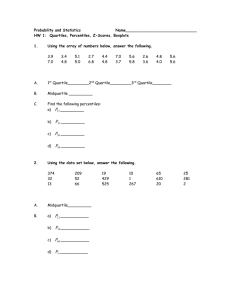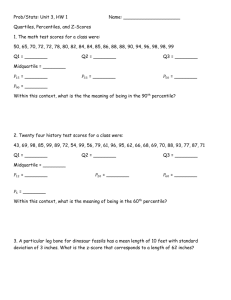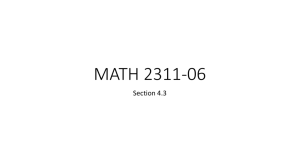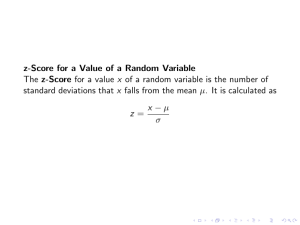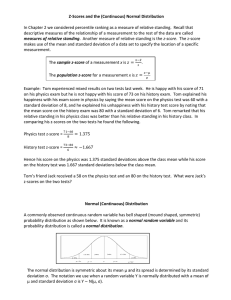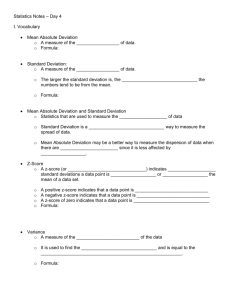Z-Scores Worksheet
advertisement
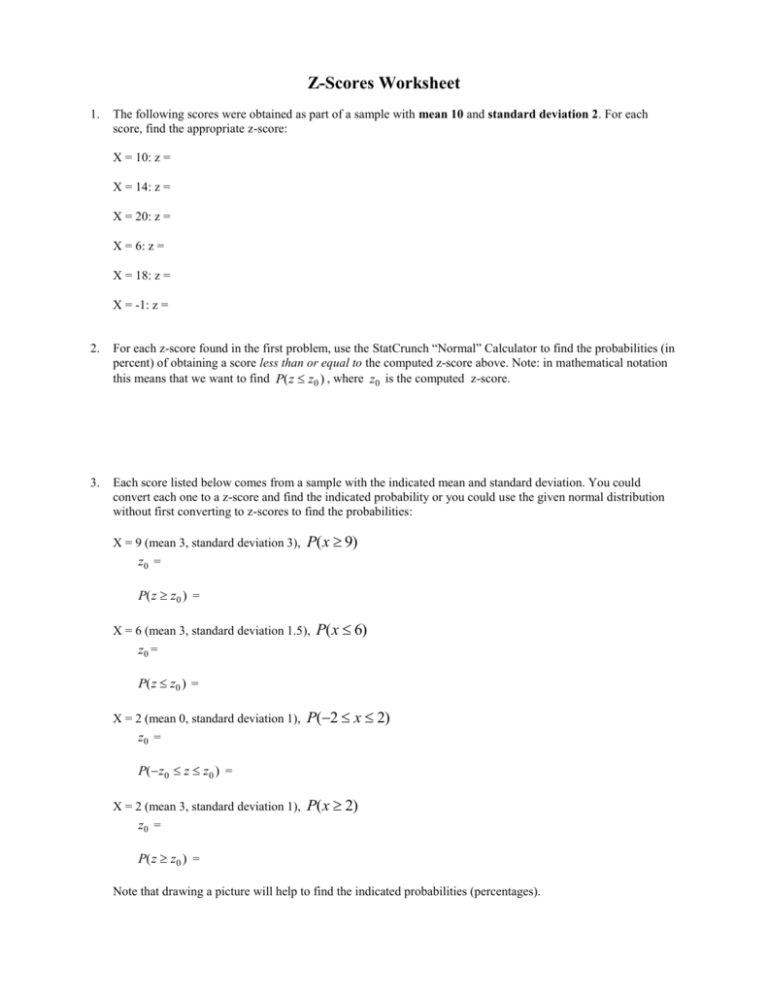
Z-Scores Worksheet 1. The following scores were obtained as part of a sample with mean 10 and standard deviation 2. For each score, find the appropriate z-score: X = 10: z = X = 14: z = X = 20: z = X = 6: z = X = 18: z = X = -1: z = 2. For each z-score found in the first problem, use the StatCrunch “Normal” Calculator to find the probabilities (in percent) of obtaining a score less than or equal to the computed z-score above. Note: in mathematical notation this means that we want to find P( z z0 ) , where z0 is the computed z-score. 3. Each score listed below comes from a sample with the indicated mean and standard deviation. You could convert each one to a z-score and find the indicated probability or you could use the given normal distribution without first converting to z-scores to find the probabilities: X = 9 (mean 3, standard deviation 3), P( x 9) z0 = P( z z0 ) = X = 6 (mean 3, standard deviation 1.5), P( x 6) z0 = P( z z0 ) = X = 2 (mean 0, standard deviation 1), P(2 x 2) z0 = P( z0 z z0 ) = X = 2 (mean 3, standard deviation 1), P( x 2) z0 = P( z z0 ) = Note that drawing a picture will help to find the indicated probabilities (percentages).

